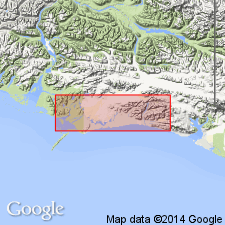
- Usage in publication:
-
- Puffy shale member
- Modifications:
-
- Original reference
- Dominant lithology:
-
- Shale
- Sandstone
- Conglomerate
- AAPG geologic province:
-
- Alaska Southern region
Summary:
Pg. 773+. Puffy shale member of Redwood formation. Upper member of Redwood formation. Predominantly dark clay shale, with many thin layers of fine flaggy sandstones and many shale-matrix conglomerates, in part of glacial origin. Thickness 4,000+ feet; top not seen. Conformably overlies Point Hey sandstone member. Lower 200 to 300 feet consists of massive calcareous shale with thin beds of hard fine-grained sandstone, which stands out as cliffs in upper part of Puffy Creek basin, Katalla district, Controller Bay region, southeastern Alaska. Assigned to upper Oligocene on basis of correlation with fossiliferous rocks in Yakataga district that are assigned to upper Oligocene by B.L. Clark.
[GNC remark (ca. 1936, US geologic names lexicon, USGS Bull. 896, p. 1742): The USGS classifies typical Katalla formation as Miocene(?). Taliaferro correlated his Redwood formation with Katalla.]
Source: US geologic names lexicon (USGS Bull. 896, p. 1742).
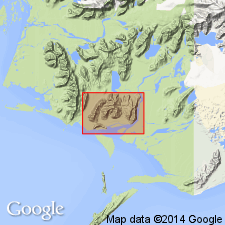
- Usage in publication:
-
- Puffy member*
- Modifications:
-
- Adopted
- Revised
- Dominant lithology:
-
- Shale
- Sandstone
- Conglomerate
- AAPG geologic province:
-
- Alaska Southern region
Summary:
Pg. 7 (table), 13. Puffy member of Katalla formation. Redefined as member of Katalla formation. Extends from base of lowest bed of shale-matrix conglomerate through the highest exposed Tertiary beds in Katalla area. Consists of dark-gray massive partly sandy shale, many beds of coarse- to medium-grained sandstone, and several thick beds and lenses of conglomerate. More than 3,700 feet thick. In unpublished manuscript by oil company geologists, Puffy conglomerate and Puffy shale treated as two distinct units in Redwood formation. Age is Oligocene.
Source: US geologic names lexicon (USGS Bull. 1200, p. 3152-3153).
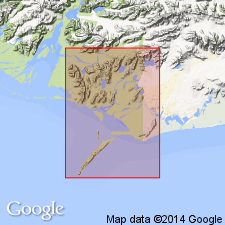
- Usage in publication:
-
- Puffy member*
- Modifications:
-
- Mapped
- AAPG geologic province:
-
- Alaska Southern region
Summary:
Pg. 23 (table 1), 36-37, pls. Puffy member of Katalla formation [= classification of Miller and others, 1945, USGS OF-45-103]. Extends from base of lowest bed of shale-matrix conglomerate through highest exposed Tertiary bed. Thickness 3,700+ feet. Conformably overlies Point Hey member of Katalla formation. Tentatively correlated with Yakataga formation of adjacent Yakataga district and Twin Rivers age rocks of Oregon and Washington. Rocks previously included in Point Hey sandstone and Puffy shale members of Redwood formation by Taliaferro (1932), and Puffy conglomerate and Puffy shale by oil company geologists. Age is Oligocene.
Recognized in Katalla area, Controller Bay region, southeastern AK.
Source: Publication; GNU records (USGS DDS-6; Menlo GNULEX).
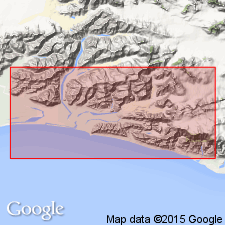
- Usage in publication:
-
- [Puffy member]
- Modifications:
-
- Age modified
- Biostratigraphic dating
- AAPG geologic province:
-
- Alaska Southern region
Summary:
[Puffy member of Katalla formation.] Age is Miocene.
Source: US geologic names lexicon (USGS Bull. 1200, p. 3152-3153).
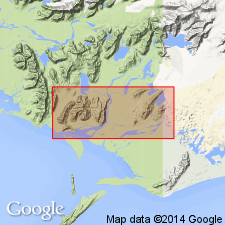
- Usage in publication:
-
- Puffy Member*
- Modifications:
-
- Revised
- Age modified
- AAPG geologic province:
-
- Alaska Southern region
Summary:
Puffy Member of Redwood Formation. Removed from Katalla Formation (restricted) and reassigned to Redwood Formation as upper of its 2 members. Overlies unnamed sandstone member of late Oligocene(?) age. Age is changed from Oligocene --to-- late Oligocene(?) and Miocene based on sparse fauna identified by F.S. MacNeil (written commun., 1963).
Type area [designated] as exposures near Puffy Creek, Don Miller Hills, Katalla district, Controller Bay region, southeastern AK.
Source: Publication; GNU records (USGS DDS-6; Menlo GNULEX); Changes in stratigraphic nomenclature, 1976 (USGS Bull. 1435-A, p. A85).
For more information, please contact Nancy Stamm, Geologic Names Committee Secretary.
Asterisk (*) indicates published by U.S. Geological Survey authors.
"No current usage" (†) implies that a name has been abandoned or has fallen into disuse. Former usage and, if known, replacement name given in parentheses ( ).
Slash (/) indicates name conflicts with nomenclatural guidelines (CSN, 1933; ACSN, 1961, 1970; NACSN, 1983, 2005, 2021). May be explained within brackets ([ ]).

